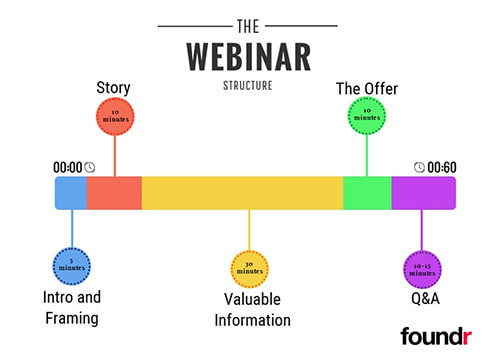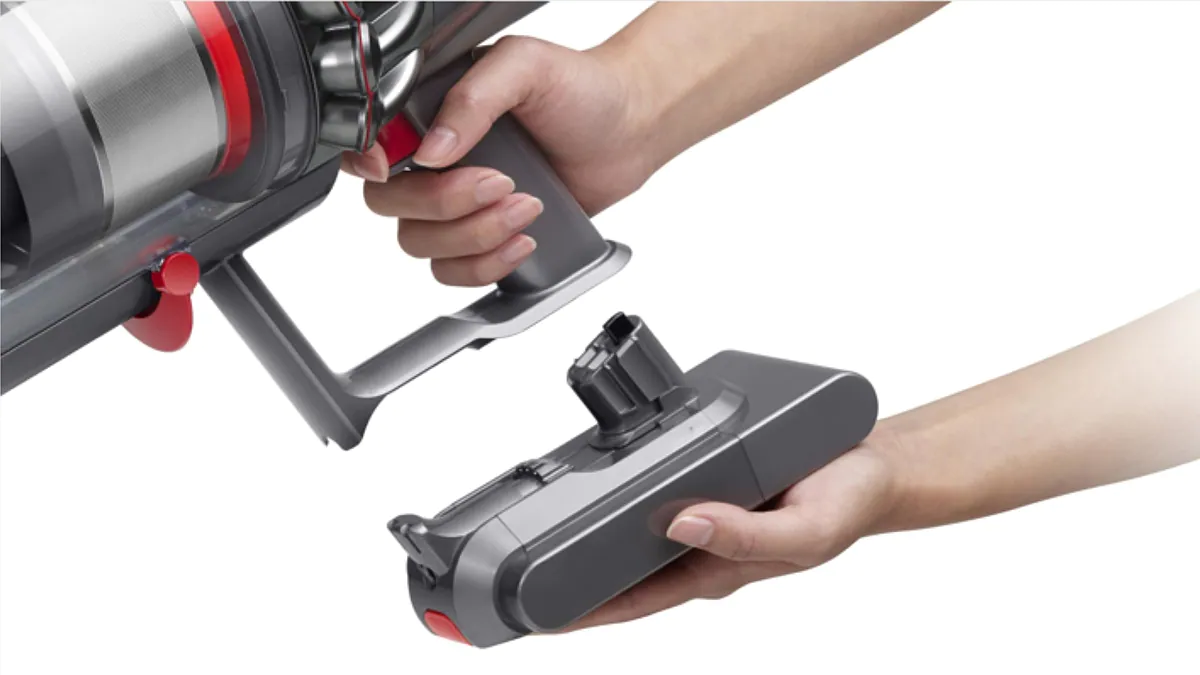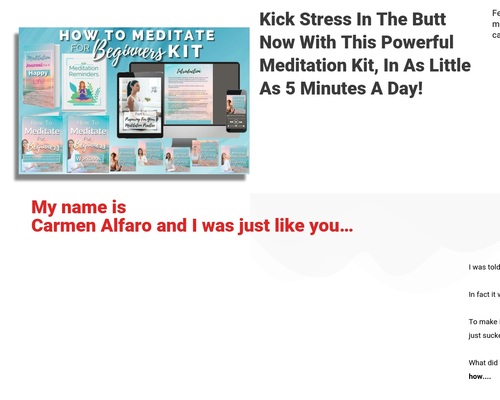
Do you find yourself interacting with people virtually more than in-person? Well, you’re not alone. Covid-19 has brought new challenges to communication, and video meeting platforms such as Zoom and Google Meet are more widely used than ever, especially for webinar marketing.
After all, 73 percent of B2B marketing and sales leaders reference webinars as the best way to generate high-quality leads.”
But good webinar marketing doesn’t come easy. It takes planning, preparation, presentation, and promotion.
Find out exactly what webinar marketing is, how it works, and how to get started today.
What is Webinar Marketing?
A webinar is an online event hosted by organizations or individuals that targets a certain audience in order to convey useful information about a topic. Webinar marketing is the science and art of creating and promoting the webinar experience in order to provide high-quality leads for your sales team and nurture campaigns. The organization or individual can then sell their product.
This product could be physical merchandise, eBooks, a service, or Software-as-a-Service (SaaS), depending on the company hosting the webinar. Marketing strategies are chosen based on the intent of the host. These strategies are usually told through presentations that can bring awareness, teach, or sell to your customers.
Customers will enjoy a hands-on walkthrough of a potential product they might purchase. A webinar can create this experience by showing your customers how your product can help, since webinars traditionally have higher conversion rates.
Webinar marketing is also a great way to turn subscribers or followers into customers.
How to Make a Good Webinar Presentation
Making a good webinar presentation starts with an engaging topic which will lure your users to sign up for your webinar. The topic can be a great feature of your product or a presentation of how your product works.
Having an engaging topic will drive engagement much more than just a webinar about your product. Crafting your webinar presentation is dependent on your intent in your marketing campaign.
Do you want to show people how to use your product or service or share your thoughts on a certain topic that attracts other like minded individuals to your site to learn more?
Whatever it is, hone in on it and create your presentation around it. This presentation can use pre-existing marketing materials you already have created such as social media posts and visuals that represent what you’re selling.
The first step to creating your webinar presentation is crafting the framework to build the presentation on. This is a common structure that is used for an hour-long webinar.

Intro and Framing – 5 Minutes
Intro and framing is about grabbing the audience’s attention and letting them know what to expect during this hour.
Story – 10 Minutes
Use this time to tell a compelling brand or personal story and draw in your audience. Think about why the attendees should believe what you have to say by showcasing credibility in your presentation.
Valuable Information – 30 Minutes
Valuable information is what your audience came for: showing them how to solve their problem with your product or service. Maximize your audience’s engagement by giving them a new strategy to use, new information to digest, or valuable research to increase their proficiency.
The Offer – 10 Minutes
The offer is your call to action, and your time to convert attendees into leads. Design your presentation to flow into this organically. It’s important to assert urgency in this portion so your attendees can leave and buy your product or service. Achieve this with a special offer or timed promotion.
Q&A – 10-15 Minutes
The Q&A portion is your chance to engage with your audience by answering questions about the topic or your product. The best way to keep the audience engaged is to allow the audience to respond throughout the webinar. Engagement doesn’t have to be a direct conversation; polls work just as well.
Choosing a Webinar Host
The importance of a good host is undervalued.
A solid host can make or break your webinar. Execution of your webinar presentation is key here. You want to look for a host that brings energy and excitement to your attendees.
Look for a host that is both knowledgeable about your product and topic, as well as a great storyteller.
How to Market Your Webinar
As a digital marketer, the purpose of webinar marketing is to push potential customers further down the customer’s journey toward purchasing a product or service.
Most Internet users are searching for specific answers to questions or problems they have, and the best way to acquire those users is through engaging content. Utilize the surge of people on the Internet looking for skills and information to better their profession or life.
You as a digital marketer can capitalize off this by driving people to your webinar with a landing page designed to capture their basic contact information.
Webinar Promotion
Promote this webinar to your target audience with your existing content platform. The goal here is to get as many webinar attendees as possible. Social media is one of the best outlets to promote the webinar.
Remember to include key takeaways you will share on the webinar that cannot be found anywhere else. This can be in the form of graphics you created or teaser videos of your product with a voice over describing what the webinar is about.
If you have a blog, place a call to action to the webinar at the bottom of a related post to drive registrants.
Why?
In an analysis done by Outgrow.co on webinar funnels, 40-45 percent of users who register will actually attend. And only 20-40 percent will turn into qualified leads.”
It’s a numbers game. You need to promote to more people to get more registrants, attendees, and more leads, generally speaking. Make sure to promote to your target audience for best results.
To increase your webinar attendance, it’s important to promote every piece of content you’re using with a direct link to your landing page. Google’s URL builder will track what campaigns are working best and which aren’t.
When creating ads, show your audience the return of investment for the time they are committing to watch your webinar during their busy day.
When you show the direct outcome of what they’ll get after watching your webinar, it will attract more attentive users better than just talking about the main product on your webinar. Illustrate a countdown timer on your landing page to show your webinar’s urgency.
Don’t forget to also mention that the event is free, as this will allow more users to not be worried about cost.
Once your attendees register, it’s important to send out a reminder with an email or text message. A good tip is to not write a reminder with just the day and time, but give a peek into what to expect for their time spent at your webinar. This builds excitement and anticipation.
Webinar promotion doesn’t stop after the webinar is over. This is the best time to show what your users got out of the webinar to show potential attendees for what they can expect about your next webinar.
Also, follow up with your attendees after the event with a recording link of the webinar. This allows the users that registered but did not attend to still get the insight shared with the attendees.
Types of Webinars
If this is a lead generation or lead nurturing webinar, your audience is most likely in the awareness or consideration stages of the buying process. They are aware of the problem you are trying to solve and are looking for a solution, and your job is to persuade them your product or service is the solution.
With a product demo webinar, the audience already has your product and is looking for new ways to use it, or they are close to purchasing your product. They are in the consideration or decision stage of the funnel.
With a customer onboarding/training webinar, the audience is new or existing users actively looking for deeper engagement with your product or tip/tricks for optimal product use.
Webinar Metrics
The next step is to define the metrics you want to use to measure performance against your goals. This can be the amount of attendees, leads, or anything that can increase performance.
To start, a good metric to have is views on the webinar landing page. The more views, the higher the likelihood of increasing registrants. That being said, not everyone that registers will attend so another key metric to have is attendees.
Remember that you can always send those who register a playback video of your webinar for them to watch on their own time.
Depending on the webinar type, you also might want a metric for new customers to measure how impactful your webinar technique was.
What is the Best Webinar Software?
The best webinar software available are WebinarJam, GoToWebinar, and Zoom.
You will need to choose which platform will work the best for your webinar and presentation type.
- If you’re doing a lead generation webinar, you should use GoToWebinar for its built in marketing tools such as automatic email invitations, confirmation, and reminders.
- If you’re doing an education webinar like a product demo or customer onboarding, use WebinarJam for powerful Q&A and attendee spotlight features that allows you to interact differently than a zoom chat.
Most tools out there offer free trials, which is great for seeing how they work and learning how to troubleshoot through issues when they happen.
Also, ensure you look professional by investing in a good Internet connection and camera. Poor video quality can distract audiences and deliver a poor presentation experience, leading to less conversions.
Webinar Dry Run
Complete a dry run of your webinar by having a colleague sit through your presentation and give you constructive feedback on how well they received the information. Run through all the features you will be using such as chat, poll, and screen sharing to get comfortable with the platform you choose, and to troubleshoot any issues that arise. This way, you are less likely to run into technical issues while live on the webinar.
Why Webinar Marketing Works
In conclusion, a webinar can be a successful lead generation tool when done correctly, and it is a great way to engage with potential customers. Your voice can build trust with these potential and current customers, and you can maximize their lifetime value by providing valuable information not found anywhere else.
Persuade them you are the best choice for them to solve their existing problem, both now and into the future.
Struggling to Scale Your Business? Find out Why Outsourcing Managed Web Services is Better for Your Business.
[ad_2]
Source link







